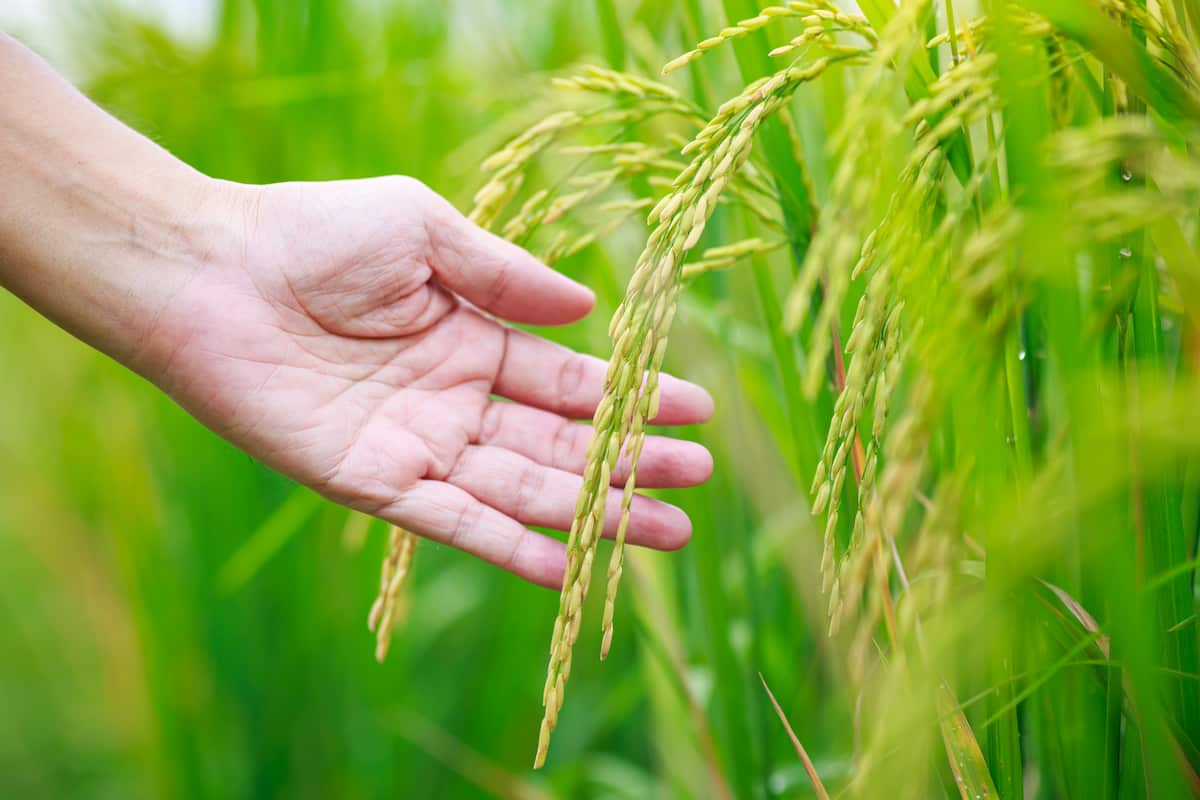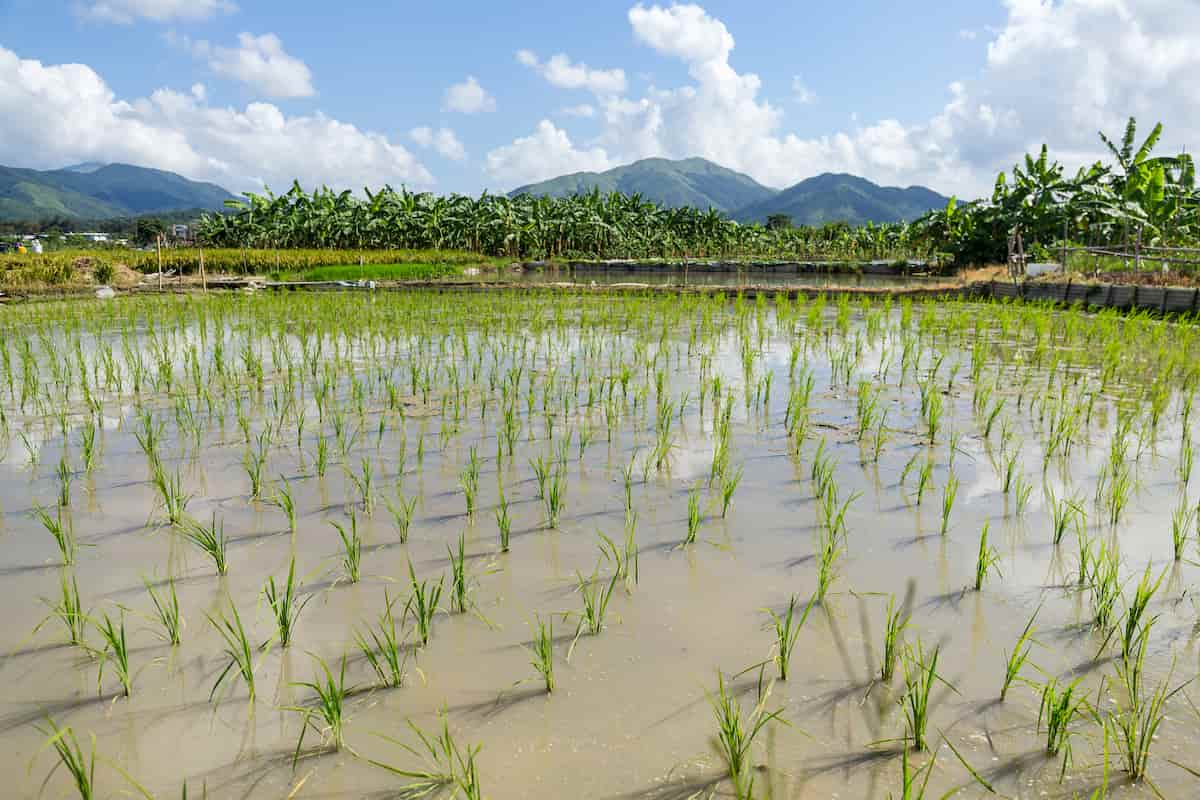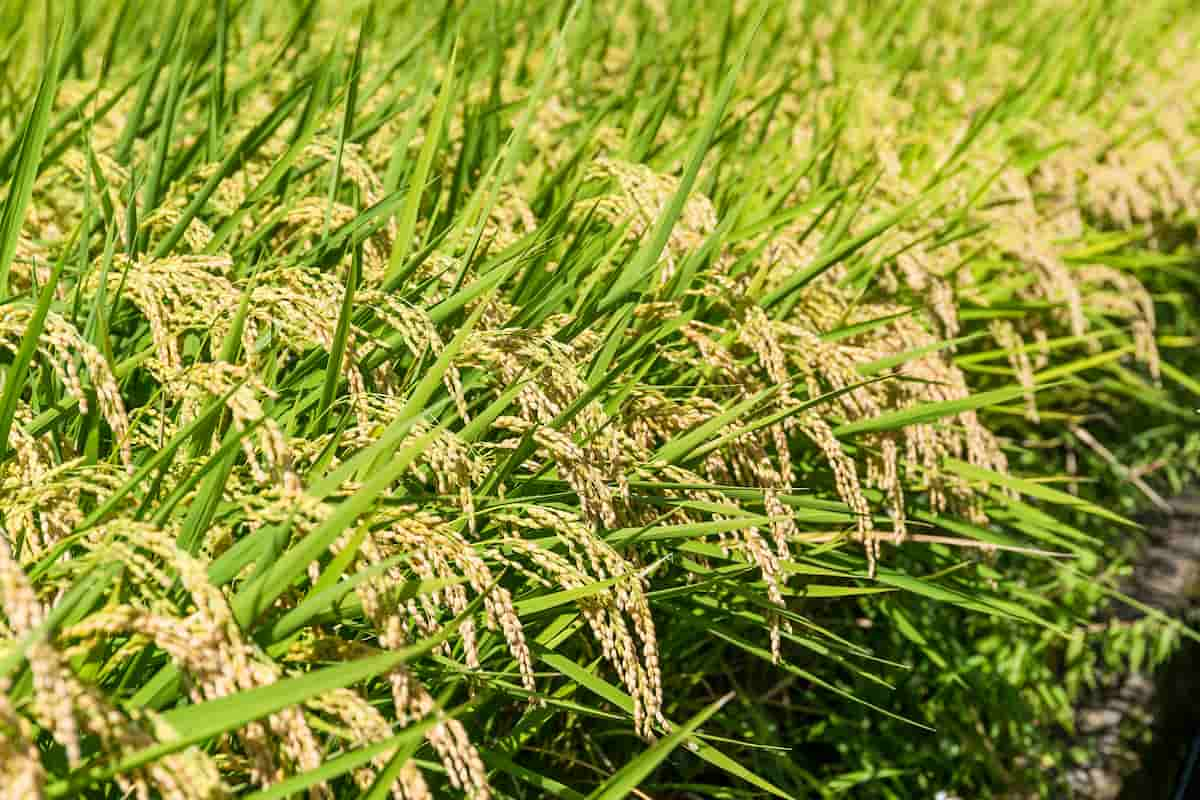Rice cultivation is an important component of India’s agricultural sector, occupying one-fourth of the total cropped area and feeding nearly half the population. India has the largest area under rice cultivation and is one of the world’s foremost rice producers. Despite its dominant position in the country’s agricultural sector, India’s rice yield is lower than that of many other nations due to diverse soil and climate conditions and an abundance of marginal, small, and medium-sized producers.
The total area given to rice cultivation in India is 43,86 million hectares, with a yield of 104,80 million tonnes and productivity of approximately 2,390 kg/ha. Heavy annual precipitation is required for rain-fed paddy cultivation, India’s most prevalent form of agriculture. Despite favorable climatic conditions, the country’s rice yield remains low due to a lack of access to modern technology and resources.

By expanding port handling infrastructure and constructing value chains involving key stakeholders, India has been attempting to increase the productivity of rice cultivation. The nation is also investigating new export opportunities in international markets. In recent years, these initiatives have led to a substantial increase in India’s rice exports.
Overall, the rice cultivation project in India has enormous potential for enhancing farmers’ livelihoods and meeting the country’s food security requirements. However, greater investments in modern technology and resources are required to increase productivity and ensure rice cultivation’s sustainability in India.
1 Acre Paddy/Rice Cultivation Project Report in India
Market and Demand for Rice Cultivation Project
The size of the rice market is projected to reach INR 23,124.13 Crores by 2025, expanding at a CAGR of 2.9% during the forecast period. India is the world’s leading rice exporter, accounting for 29.3% of global rice exports. Rising demand for carbohydrate-rich diets and rising rice consumption in emerging and developing nations are propelling the expansion of the rice market.
India allocates one-fourth of its total cropped area to rice, predominantly grown as a Kharif crop in rain-fed regions. India’s exports are growing 6.0% per year due to the rising global demand for rice. Increasing government initiatives for commercializing and developing main domestic rice production industries also expand the market.
Best Paddy High Yield variety for Paddy Cultivation
- The Pusa Basmati 1121 variety is widely recognized for its superior cooking quality, lengthy grain length, and high yield potential. It has become popular on the export market and is suitable for cultivation in the northern regions of India.
- Samba Masuri variety is widely cultivated in Andhra Pradesh and Tamil Nadu and is renowned for its high yield potential, disease resistance, and excellent cooking quality.
- The Swarna variety is well-known in the eastern regions of India for its medium-sized grains, excellent culinary quality, and high-yield potential. Additionally, it is resistant to many parasites and diseases.
- IR64 hybrid cultivar is well-known in India for its high yield potential, excellent cooking quality, and disease resistance.
- MTU 1001 is suitable for cultivation in areas with significant precipitation and is renowned for its high yield potential, resistance to pests and diseases, and high cooking quality.
In case you missed it: Chili Production Guide: A Step-By-Step Cultivation Practices

Cost of Cultivation for 1-Acre Samba Masuri Rice Cultivation in India
- Seed material cost: The seed rate required for 1 acre of Samba Masuri rice cultivation is 15-25 kg. Assuming the cost of good quality seed is Rs. 80 per kg, seed material costs Rs. 2,000.
- Land preparation cost: The land preparation cost for Samba Masuri rice cultivation is The cost for land preparation including plowing, puddling, and leveling, is around Rs. 3,200.
- Cost of sowing: Sowing is done by transplanting 3-4 week old seedlings in puddled soil. The cost for sowing, including labor and other expenses, is around Rs. 2,500.
- Weeding cost: Samba Masuri rice require Hand weeding is compulsory, and should be done 2 to 3 times at 20 days intervals starting from 20 days after planting. Generally, the farmer must incur around Rs. 3,500 if it requires six weeks of labor for each weeding.
- Cost of fertilizers: For Samba Masuri rice cultivation, around 50 kg of nitrogen, 25 kg of phosphorus, and 25 kg of potassium are required per acre. Broadcasting of 25 kg urea, 25 kg DAP, and 12.5 kg MOP per acre is recommended. The cost of fertilizers, including labor and other expenses, is around Rs. 7,000.
- Cost for plant protection measures: Samba Masuri rice is susceptible to stemborers, diseases, and insect pests. Plant protection measures, including pesticides and labor, cost around Rs. 4,500.
- Miscellaneous activities cost: Interest on working capital, the rental cost of land, irrigation cost, electricity cost, and cost of family labor are included under miscellaneous cost. All these costs need around Rs. 3,000.
- Cost of harvesting and threshing: Harvesting is done when the ears are nearly ripe, and the straw has turned yellow. The harvested crop should be threshed on the same or the next day of harvesting. Harvesting can be done either mechanically or manually. Manual harvesting requires human labor for cutting, along with a tractor for threshing. In both harvesting modes, it costs up to Rs. 3,200.
- Transportation cost: The cost of transporting produce to the market is around Rs. 1,500.
The total cost of 1-acre Samba Masuri rice farming: Rs. 30,400
Extra 10% of total cost: Rs. 3,040
The total cost of 1 acre of Samba Masuri rice farming with an extra 10%: is Rs. 33,440. However, the total cost of cultivation can change slightly based on other rice varieties, insect incidence, climatic conditions, and other abiotic conditions.
Total Returns from 1 Acre Samba Masuri Rice
Gross returns from 1 acre Samba Masuri rice is Farmers can sell quintal Samba Masuri rice at 4,000-4500/quintal. A farmer can get 22 quintals of yield. The Average yield of Samba Masuri rice can be expressed as 20-25 quintals/acre or 2000-2500 kg/acre.
Total Returns from 1 acre Samba Masuri rice is Rs. 22quintals X 4200 = 92,400
In case you missed it: Private Crop Insurance Companies in India

Net Profit from 1 Acre Samba Masuri Rice
- Net profit = Total returns – Total cost of cultivation.
- Net profit = Rs. 92,400 – Rs. 33,440
- Net profit = Rs. 58,960.
Please note that the costs and returns mentioned here are estimates, and actual figures may vary based on many variables, including, among others, variety, market conditions, labor costs, and weather.
Conclusion
The cost of producing 1 acre of paddy/rice in India varies based on factors such as variety, market, labor, and climate. With appropriate maintenance, however, the net profit can be large. Additionally, cultivating the Samba Masuri variety can be profitable for farmers.
- Feed Your Flock for Less: Top 10 Tips to Save on Chicken Feed
- Ultimate Guide to Ossabaw Island Hog: Breeding, Raising, Diet, and Care
- Hatching Answers: The Top 10 Reasons Your Chickens Aren’t Laying Eggs
- Eggs and Economics: Breaking Down the Cost of Raising Backyard Chickens
- Defend Your Greens: Proven Methods to Keep Iguanas Out of Your Garden
- Ultimate Guide to Cinnamon Queen Chicken: A Comprehensive Guide for Beginners
- Ultimate Guide to California Tan Chicken: Breeding, Raising, Diet, Egg-Production and Care
- Ultimate Guide to Marsh Daisy Chicken: Breeding, Raising, Diet, and Care
- 10 Types of Chicken Farming Businesses You Can Start for Profits